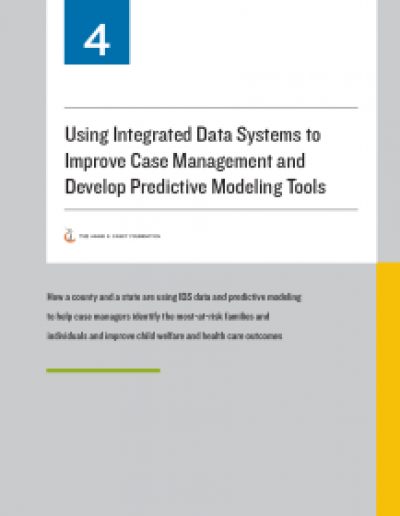Modeling Success
Early evidence suggests predictive modeling supports improved screening and targeting of cases.

This brief describes the innovative uses of IDS data, how it shapes decision-making on the ground and how it improves outcomes for vulnerable children, families and adults. The human services departments in Allegheny County, Pennsylvania and Washington state are leaders in using an integrated data system to develop predictive modeling tools used by frontline case managers in the child welfare system and in the Medicare-Medicaid systems. These departments also share IDS data with their service provider networks to empower caseworkers and improve service coordination.
Predictive risk modeling examines large, detailed amounts of de-identified data to determine past patterns in order to predict future outcomes. Because they link large datasets from multiple systems, an IDS offers a robust source for developing predictive risk models — and related tools — that can help frontline caseworkers make faster, more consistent and more evidence-based decisions.